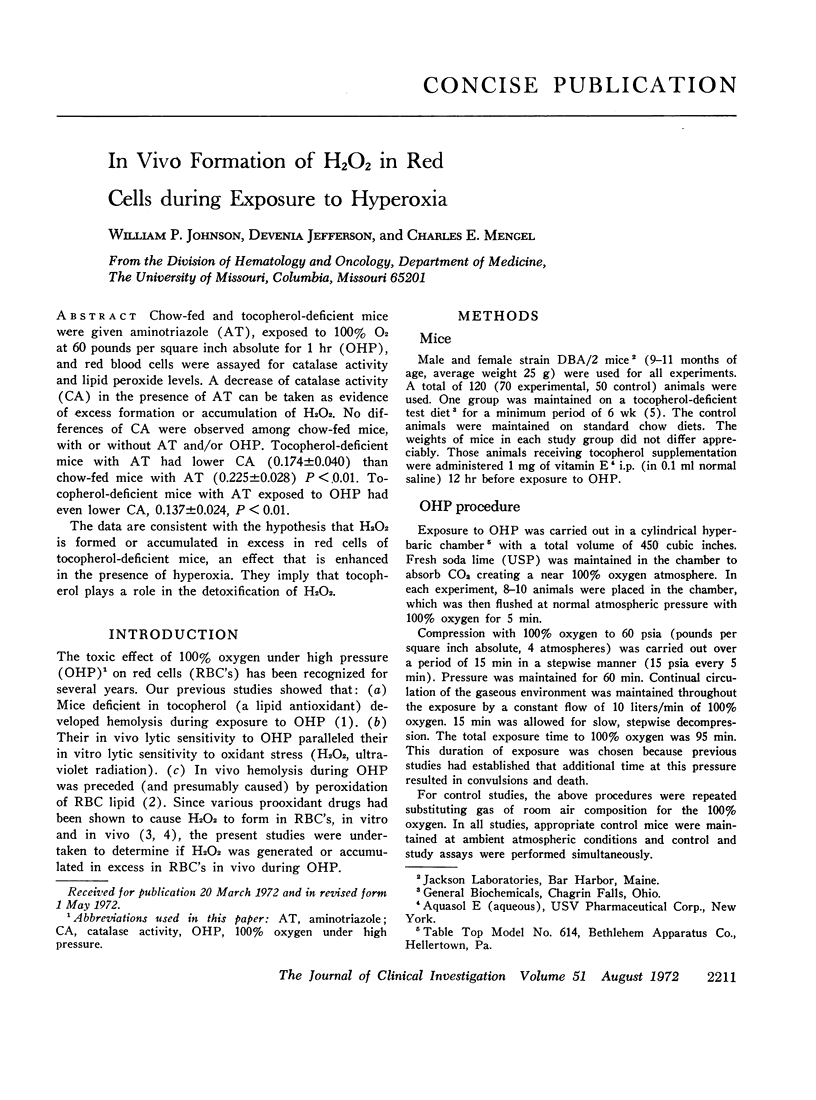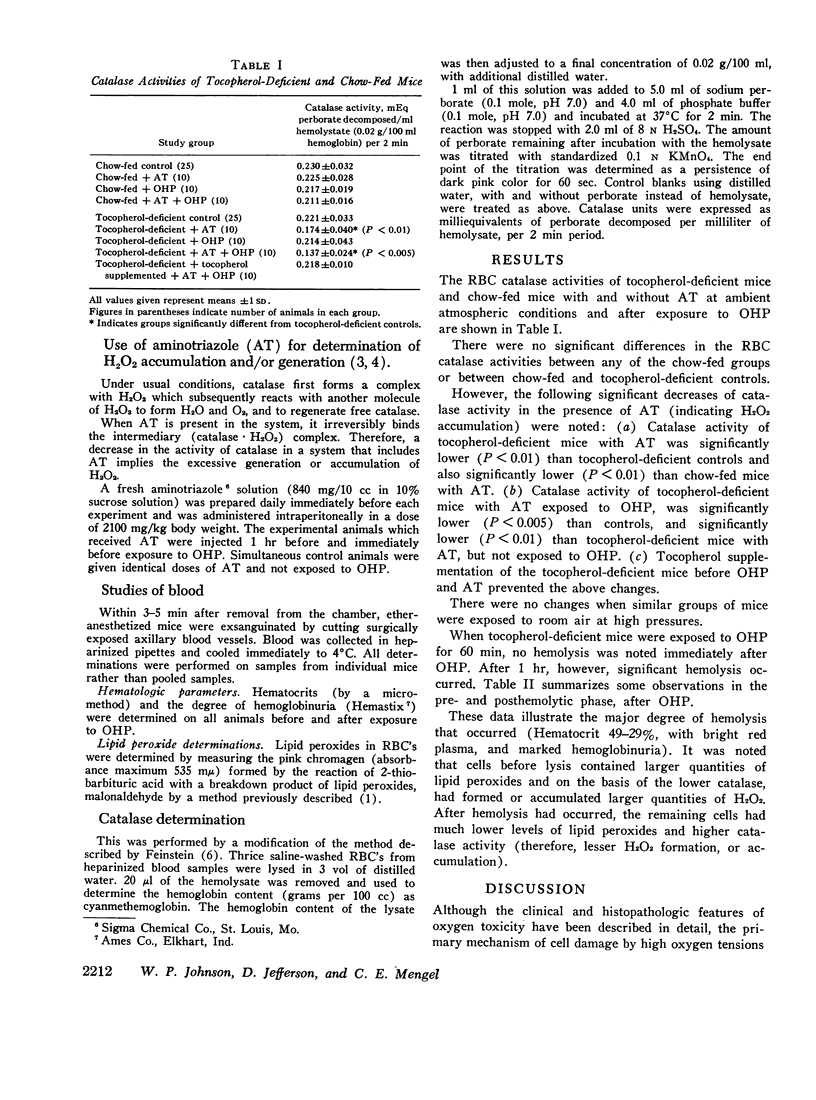Abstract
Chow-fed and tocopherol-deficient mice were given aminotriazole (AT), exposed to 100% O2 at 60 pounds per square inch absolute for 1 hr (OHP), and red blood cells were assayed for catalase activity and lipid peroxide levels. A decrease of catalase activity (CA) in the presence of AT can be taken as evidence of excess formation or accumulation of H2O2. No differences of CA were observed among chow-fed mice, with or without AT and/or OHP. Tocopherol-deficient mice with AT had lower CA (0.174±0.040) than chow-fed mice with AT (0.225±0.028) P < 0.01. Tocopherol-deficient mice with AT exposed to OHP had even lower CA, 0.137±0.024, P < 0.01.
The data are consistent with the hypothesis that H2O2 is formed or accumulated in excess in red cells of tocopherol-deficient mice, an effect that is enhanced in the presence of hyperoxia. They imply that tocopherol plays a role in the detoxification of H2O2.
Full text
PDF


Selected References
These references are in PubMed. This may not be the complete list of references from this article.
- COHEN G., HOCHSTEIN P. GENERATION OF HYDROGEN PEROXIDE IN ERYTHROCYTES BY HEMOLYTIC AGENTS. Biochemistry. 1964 Jul;3:895–900. doi: 10.1021/bi00895a006. [DOI] [PubMed] [Google Scholar]
- COHEN G., HOCHSTEIN P. IN VIVO GENERATION OF H2O2 IN MOUSE ERYTHROCYTES BY HEMOLYTIC AGENTS. J Pharmacol Exp Ther. 1965 Jan;147:139–143. [PubMed] [Google Scholar]
- Goldstein J. R., Mengel C. E., Carolla R. L., Ebbert L. Relationship between tocopherol status and in vivo hemolysis caused by hyperoxia. Aerosp Med. 1969 Feb;40(2):132–135. [PubMed] [Google Scholar]
- Kann H. E., Jr, Mengel C. E., Clancy W. T., Timms R. Effects of in vivo hyperoxia on erythrocytes. VI. Hemolysis occurring after exposure to oxygen under high pressure. J Lab Clin Med. 1967 Jul;70(1):150–157. [PubMed] [Google Scholar]
- LAMBERTSEN C. J. HYPERBARIC OXYGENATION. OXYGEN. INTRODUCTORY REMARKS. Ann N Y Acad Sci. 1965 Jan 21;117:727–729. [PubMed] [Google Scholar]
- MENGEL C. E., KANN H. E., Jr, HEYMAN A., METZ E. EFFECTS OF IN VIVO HYPEROXIA ON ERYTHROCYTES. II. HEMOLYSIS IN A HUMAN AFTER EXPOSURE TO OXYGEN UNDER HIGH PRESSURE. Blood. 1965 May;25:822–829. [PubMed] [Google Scholar]
- Mengel C. E., Kann H. E., Jr Effects of in vivo hyperoxia on erythrocytes. 3. In vivo peroxidation of erythrocyte lipid. J Clin Invest. 1966 Jul;45(7):1150–1158. doi: 10.1172/JCI105421. [DOI] [PMC free article] [PubMed] [Google Scholar]
- RAIHA N. Hemolysis of human blood caused by oxygen and its prevention with vitamin E; preliminary report. Acta Paediatr. 1955 Mar;44(2):128–131. doi: 10.1111/j.1651-2227.1955.tb04123.x. [DOI] [PubMed] [Google Scholar]
- TAYLOR D. W., WISEMAN R. Rate of oxygen uptake of erythrocytes of vitamin E-deficient rats. Nature. 1962 Dec 15;196:1102–1103. doi: 10.1038/1961102a0. [DOI] [PubMed] [Google Scholar]


